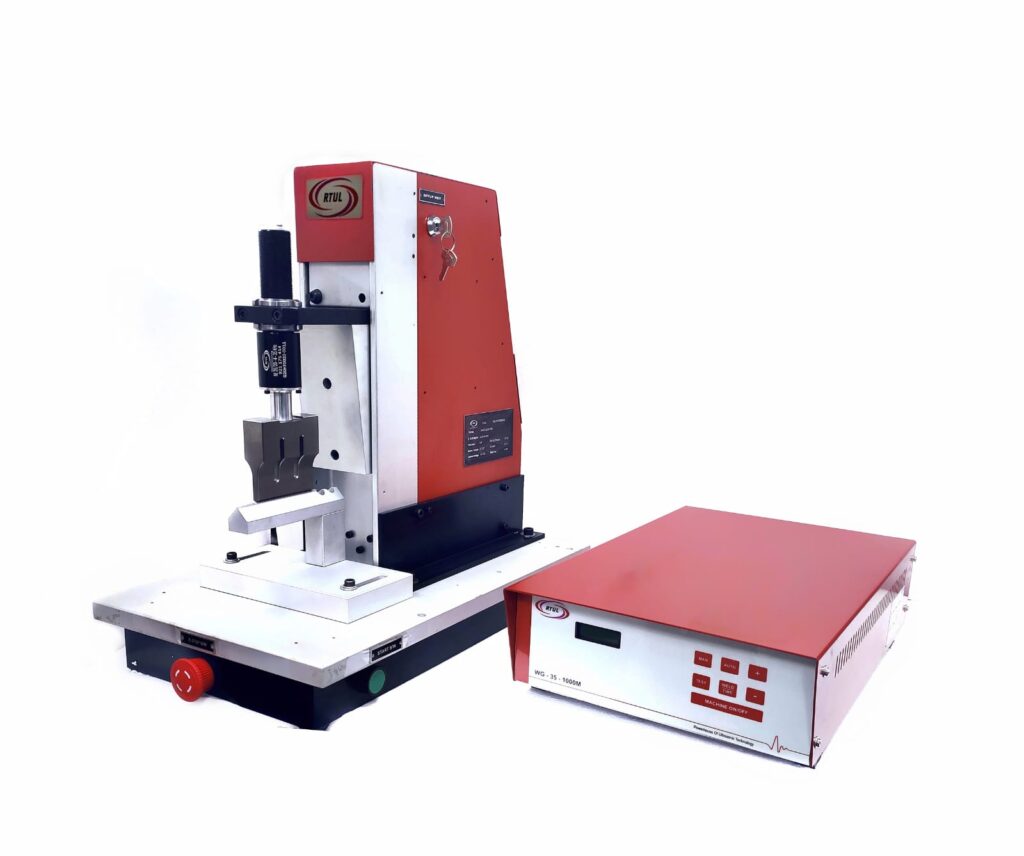
Ultrasonic welding is all about sound and frequency! The entire process happens in split seconds. Just like the chirping and tweeting of birds or a glass-shattering noise. The sounds are produced in the air, gas state liquids or solids and this is where the sound waves make all the difference. Why is this technique popular across industries?
RTUL Group which makes Ultrasonic welding components brings to you its feasible characteristics to take advantage of. Our expertise is growing popular with many companies for machinery to cut thermoplastics and other welding purposes.
The process
The welding procedure primarily depends on Ultrasonic vibrations which are produced when they hit a material. It could be plastic or any item that creates a molecular chain of oscillations. They move and rub against one another creating a friction heat. They melt in the case of thermoplastics. This allows the welding process to occur at a molecular level in the area where joints are required. It happens in split seconds.
Where is it most applicable?
- Injection molded parts (for example, plastic toys to be joined).
- Shaping technique to make form-fit joints like magnet chargers.
- Air filters in cars or fusing leather parts, woven or non-woven fabrics.
- Membrane fillers of medical devices.
- Bringing together different materials like airbags.
- Encapsulating magnets or sockets to activate sensors.
They can be applied for different production lines and can handle the complex operations required for welding.
RTUL Group Advantage
All our ultrasonic components have undergone quality checks to meet the standard requirements. We have several research centers and labs where the checks are conducted. The other features of our products are:
- Comprehensive configuration and regular upgrades
- Important instruments like generators are updated
- Compact design of generators
- Ideally suited for industrial plants where space is a constraint
An active ultrasonic welding system comprises of other parts along with the generator. They can be relied upon to produce the vibrations, transfer them, and fit the welding of joints. There are other elements that are passive but also work like absorbers. They ensure that the other parts are well-balanced and in a stable position or to operate.
The active operators are:
- Generators
- Convertor
- Amplitude /coupler transformer (they are also called booster)
- Sonotrode- a good welding tool
The passive operators:
- Fixtures
- Anvil
The entire stack also consists of boosters, convertors, and sonotrode. We offer external generator controls that can be adjusted with the settings. It comes with an interface adapter and a terminal. We offer models that can be upgraded at a later stage or a production scale requirement.
The energy has to converge at the correct points when welding is applied. While designing we focus on energy directors, component integration, and materials. The tools can be shaped for required applications. Our energy design features:
- Joints
- Sonotrode
- Anvil profiles
Thermoplastics can be molded and welded with ultrasonics with precision. A harder material is ideal for welding. Other materials that can undergo this procedure include non-ferrous metals, aluminum, copper, brass, and nickel.
Ultrasonic welding produces high vibrational energy and is one of the most popular. It is quite economical and is very easily automated for mass production. If you belong to industries like automobiles, packaging, electronics, or appliances we can be your welding partners. Do let us know how we can offer our well-designed components.
.png)
.png)
.png)